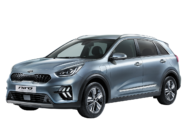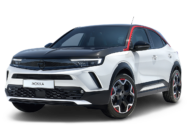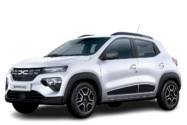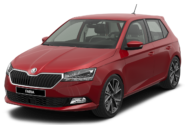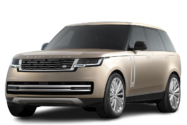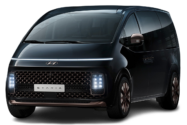27th April 2023
Volkswagen T-Roc becomes the cleanest petrol car tested
Today, Green NCAP announces the ratings for six cars: the new Nissan Ariya and Renault Austral, the Volkswagen T-Roc, Volvo XC40, the Ford Fiesta and the new Hyundai STARIA. Tests reveal that the Volkswagen T-Roc achieved the Highest Clean Air Index of all petrol and diesel cars that Green NCAP has assessed to date. Among this set of results are a range of vehicles from the popular mid-size SUV segment as well as the still in-demand Ford Fiesta and the new Hyundai STARIA, a multi-purpose minivan. The electric Nissan Ariya stands out due to its high charging efficiency.
The Ariya represents the next generation of electric cars for its producer, Nissan. The big battery in this two-tonne vehicle enables the car to drive more than 500 km (WLTP), although the range decreases substantially to 300 km in cold weather conditions (-7°C) and on the motorway. Green NCAP strongly encourages manufacturers to be more efficient during the charging process so that more energy remains available for overall usage. In the case of the Ariya, Nissan offers a vehicle that successfully delivers in this regard. The Nissan Ariya confidently reaches an Average Score1 of 96% and 5 Green Stars.
Nissan’s Ariya shows a grid-to-battery-output efficiency of 91.6% - the highest measured by Green NCAP so far. This is important as it decreases the amount of energy lost as well as the cost for consumers.
Dr. Aleksandar Damyanov, Green NCAP’s Technical Manager
The Renault Austral E-Tech Full Hybrid 200 is an SUV with a kerb weight of 1,600 kg. The 400 V hybrid system increases energy efficiency, primarily in tests below motorway speeds. The Renault Austral benefits from a full hybrid powertrain that noticeably reduces consumption in urban and rural conditions, despite its relatively large size. Pollutant emissions are also robustly controlled, but additional effort to master the challenges of cold start conditions would pay dividends for an even higher Clean Air score. Due to its favourable fuel consumption figures, the vehicle scores better in the Greenhouse Gas Index than other similar sized non-hybrid SUVs. With an Average Score of 52%, the Austral receives a well-deserved 3 Green Star rating.
Green NCAP tested two more established SUVs: the Volkswagen T-Roc and the Volvo XC40. The T-Roc tested is a compact SUV with the latest 1.5-litre direct injection turbocharged petrol engine. Petrol cars generally emit higher level of CO2 emissions, and this limits their performance in the Greenhouse Gas Index. On the positive side, this vehicle manages harmful pollutants impressively with a respectable 7.7 points out of 10 – Green NCAP's best Clean Air Index result for a car with a combustion engine. However, due to its relatively high fuel consumption values in the Energy Efficiency Index, the T-Roc misses a 3‑star rating and finishes with an Average Score of 49% and 2½ Green Stars.
The Volvo XC40 is a 48 V mild-hybrid SUV equipped with a 2-litre direct injection turbo charged petrol engine. The car emits significant greenhouse gases resulting in a low Greenhouse Gas Index and consequently scores only 2.3 out of 10 points. Also, the mild-hybrid system does not help the relatively heavy SUV to reach more than 4 points in the Energy Efficiency Index. With an Average Score of 41%, the Volvo XC40 B3 receives 2½ Green Stars.
The impressive results of the Volkswagen T-Roc prove that the output of pollutant emissions can be effectively minimised even in conventional cars. Overall, the results of the Nissan Ariya, the Renault Austral and the Volkswagen T-Roc set an example of technological progress across the board that works in the interest of both consumers and the environment.
Dr. Aleksandar Damyanov, Green NCAP’s Technical Manager
Ford has announced that the company will no longer produce the Fiesta from June 2023, yet it remains a popular and prevalent car on the road. Green NCAP tested the ST-Line Vignale 1.0 l petrol with a 7‑speed automatic transmission and 48&nbps;V mild hybridisation. The selected powertrain configuration displays commendable energy efficiency performance for a conventional petrol-powered car, but the pollutant-emissions control strategy is notably challenged in some tests and loses robustness under difficult highway conditions. Overall, the Fiesta performed well but due to mediocre results in the Clean Air part of the assessment, delivers an Average Score of 42% and 2½ Green Stars.
The sleek Hyundai STARIA is a large and heavy 7‑seater van with an unladen mass of 2.4 tonnes. Despite its futuristic design, the vehicle is powered by a 2.2‑litre diesel engine and this, coupled with its mass and size, delivers poor results in Green NCAP’s Energy Efficiency and Greenhouse Gases Indexes. The STARIA also lacks a robust exhaust aftertreatment that could have improved the rating.
With an Average Score of 19%, the Hyundai STARIA receives only 1 Green Star.
Green NCAP also calculated the Life Cycle Assessment (LCA) values of the vehicles tested as part of this release; these calculations and the corresponding LCA Fact Sheets can be found here.
1 The Average Score for the rating is the average of the three indexes expressed as a percentage.
Editor's Note
For media information, please contact Cordelia Wilson, Senior Communication Consultant, at media@greenncap.com
Follow and Share
About Green NCAP
Green NCAP uses a broad range of tests to address the flaws in approval tests and, through consumer information, rewards those manufacturers whose vehicles go beyond the minimum requirements and offer excellent, robust, real-world performance.
We believe that consumers need to be adequately informed about the energy consumption and related greenhouse gas emissions of the vehicle of their choice.

